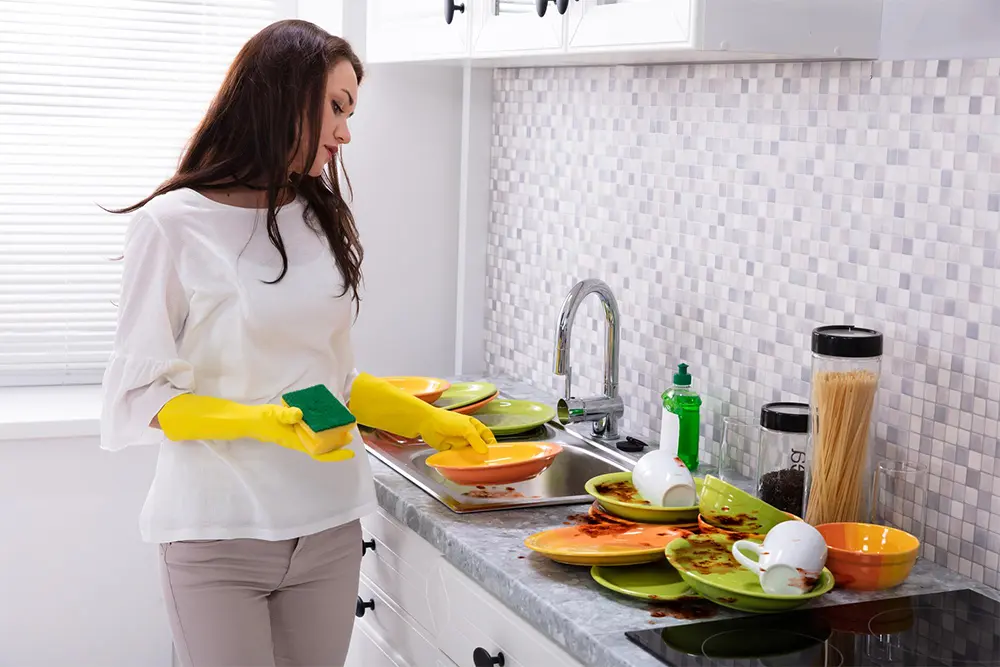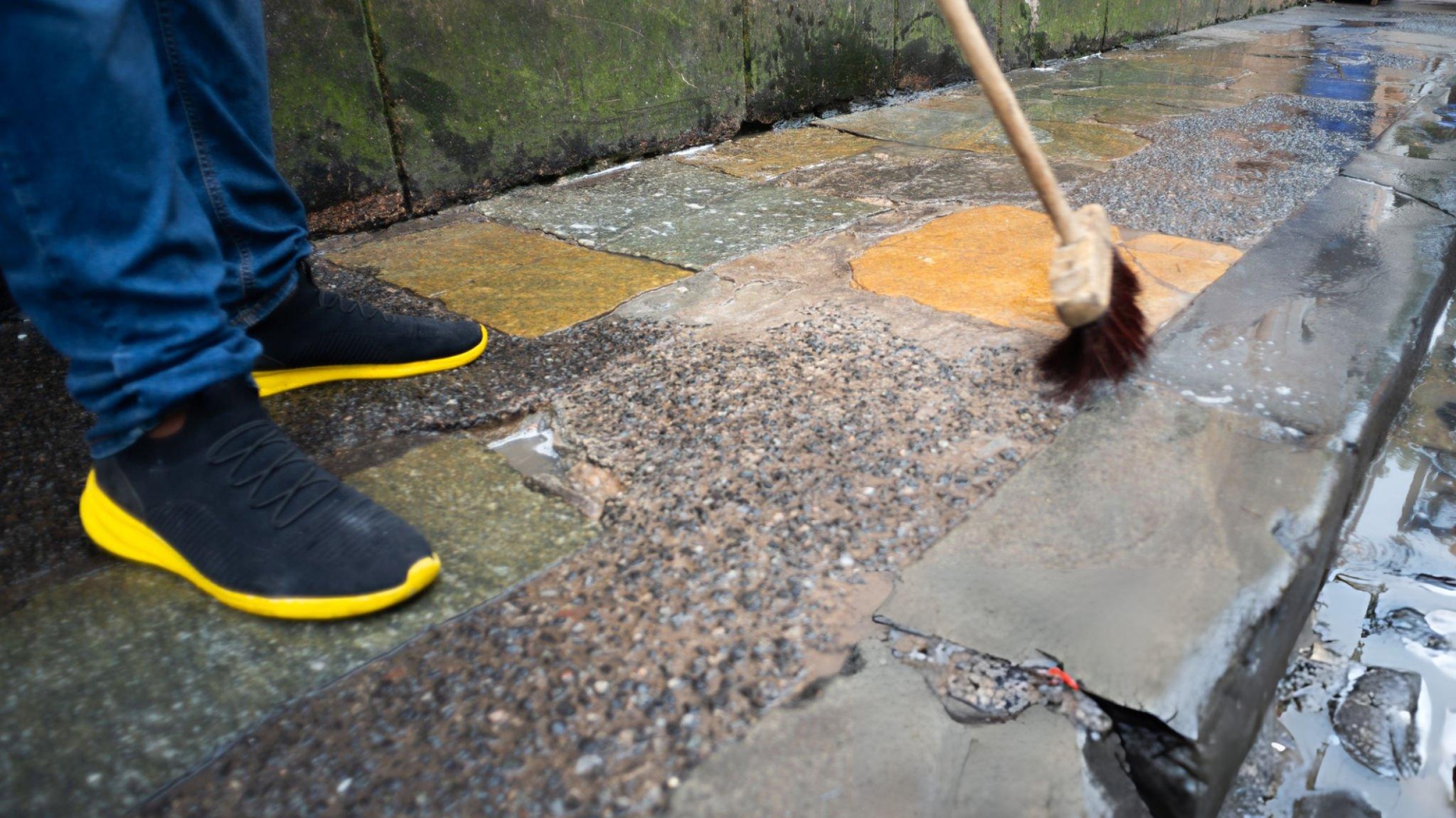Cleaning dirty utensils is an essential part of maintaining a hygienic and organized kitchen. It is especially important in the food industry where proper cleaning of utensils ensures food safety and prevents cross-contamination. Adopting the correct method for cleaning utensils not only helps maintain high standards of cleanliness but also contributes to preventing the spread of harmful bacteria.
There are several techniques for cleaning dirty utensils by hand or using dishwasher machines. The most commonly used manual cleaning method involves a three-step process, including washing, rinsing, and sanitizing. This method ensures that utensils are thoroughly cleaned and ready for use in preparing and serving food.
Understanding how to effectively clean and maintain utensils is crucial for both household and commercial environments. By following the appropriate guidelines and using approved cleaning agents, one can ensure that utensils remain clean and safe for use, ultimately contributing to a healthier and more efficient food preparation process.

目录
ToggleTypes of Dirty Utensils
When it comes to cleaning dirty utensils, it’s essential to first identify the types of utensils before applying the appropriate cleaning methods. Utensils can be categorized into three primary types: cooking utensils, cutting utensils, and eating utensils.
Cooking utensils include items used during the preparation and cooking of meals, such as pots, pans, spoons, spatulas, and whisks. These utensils often have stubborn food residues and burnt particles, which can be removed by soaking in hot water before washing with soap.
Cutting utensils, on the other hand, comprise knives, chopping boards, and graters. These items need careful handling due to their sharp edges. They typically require a thorough scrub to remove tiny food particles lodged between the sharp ridges or grooves, followed by proper drying to prevent rusting.
Finally, eating utensils consist of forks, spoons, and plates, which are the most commonly used items in a kitchen. These utensils need a combination of scraping, washing, and rinsing to remove leftover food particles and ensure proper sanitization. First, scrape away the excess food with a paper towel or a scraper before washing in warm, soapy water. Then, rinse with clean water.
In general, each type of utensil requires a specific cleaning approach. By identifying dirty utensils and their corresponding cleaning methods, it becomes easier to maintain a clean and hygienic kitchen environment.

Procuring Essential Cleaning Tools
When it comes to cleaning dirty utensils, having the right tools is essential. Equipping your kitchen with these items will make the cleaning process easier and more efficient.
A scrub brush remains a fundamental cleaning tool for any kitchen. It’s perfect for removing stuck-on food and scrubbing a variety of surfaces. The Lean and Mean Scrub Brush is a popular option.
Dishcloths are useful for wiping down counters and tables, as well as cleaning utensils. Jesun’s set is both affordable and effective for everyday use.
In addition, non-abrasive scrubbing pads are essential for cleaning delicate utensils without causing damage. These pads enable easy removal of stubborn food residues without scratching surfaces.
For an effective cleaning solution, consider using a dishwashing detergent that cuts through grease and eliminates any lingering odors.
Finally, invest in a dish rack where you can place your clean utensils and dishes to air dry. Air drying is the most sanitary method as it minimizes the chances of bacteria growth associated with using towels.
By procuring these essential cleaning tools, you’ll make the process of washing dirty utensils faster, more efficient, and more enjoyable.
Pre-Cleaning Process
The pre-cleaning process is an essential step for maintaining a clean and hygienic environment. By removing food remnants and dirt, you can effectively prevent the growth of harmful germs and bacteria. To start the pre-cleaning process, follow these easy steps.
First, scrape away any leftover food on the utensils using a paper towel or a plastic scraper. This helps to remove large particles that could, otherwise, make the cleaning water dirty and less effective. Don’t spend too much time removing tiny food bits, as they can be effectively cleaned during the washing step.
Next, rinse the utensils thoroughly with running water. Make sure to use warm water, as it helps in loosening dried and stuck-on food particles.
Ensure that utensils are immersed in water and rotated to cover all surfaces during the rinsing process. By doing this, you can effectively remove detergent and loosened residue, further preparing the utensils for the main cleaning process.
During the pre-cleaning process, it’s essential to keep your workspace organized and neat. Ensure dirty utensils are separated and placed in proper containers before washing. This not only keeps the space tidy but also helps prevent cross-contamination with clean utensils.
Remember, a thorough and effective pre-cleaning process is crucial for maintaining the overall hygiene in your kitchen. Following these simple yet essential steps can help you ensure that your utensils are cleaned to the highest standard, promoting overall food safety and good kitchen practices.

Mastering Different Cleaning Techniques
Manual Cleaning
Manual cleaning of utensils is an essential skill to acquire for maintaining a hygienic kitchen environment. Start by removing excess food particles using a paper towel or a scraper. After that, soak the dirty utensils in hot water to loosen any remaining dirt, grease, or grime. Use a detergent and scrubbing tool, such as a sponge or a brush, to clean the surfaces thoroughly. Rinse the utensils with clean water to remove soap residue and any remaining particles. Don’t forget to sanitize the utensils after cleaning, as this is crucial for reducing the number of germs.
To enhance the cleaning process, you can use natural ingredients like vinegar. Fill a container with hot water and add 1-2 cups of white vinegar. Soak the utensils in this mixture for a few minutes to help break down tough stains and remove them from the surfaces.
Dishwasher Method
Using a dishwasher can be an efficient and time-saving method for cleaning dirty utensils. Before placing the utensils in the dishwasher, remove any large food particles from their surfaces. Load the utensils properly, following the manufacturer’s guidelines for optimal cleaning. Ensure that sharp knives and delicate items are placed carefully to avoid damage.
Choose the appropriate setting on your dishwasher for the type of utensils you are cleaning. Regular cycles are fine for everyday items, but heavily soiled utensils may require a more intensive cycle. Once the cycle is complete, check the utensils for cleanliness, and rewash any items that need further attention. Finally, allow the utensils to dry completely before putting them away.
In conclusion, mastering different cleaning techniques, such as manual cleaning and the dishwasher method, will ensure that your utensils are clean and safe for food handling.
The Drying Ritual
Air Drying
Air drying is a simple, natural, and energy-efficient drying method as it requires no external heat or equipment. Simply place the cleaned utensils on a dish rack or a clean, dry surface, and let them air dry. Ensure there’s enough space between each item to allow proper air circulation, which promotes faster and more thorough drying. Air drying is a sanitary method because it significantly reduces the risk of cross-contamination which may be associated with towel drying.
Towel Drying
Towel drying can be an effective way to quickly dry your dishes, but it is crucial to use a clean and dry towel. Microfiber towels are particularly absorbent and can help reduce streaks or lint left behind during the drying process. To minimize the risk of cross-contamination, it is recommended to change the drying towel frequently and avoid using the same towel for multiple tasks in the kitchen. When towel drying, gently pat the utensils dry or use a soft rubbing motion to avoid scratching or damaging the surface.
Remember to keep your kitchen towels clean and fresh by washing them regularly, and always practice good hygiene while handling clean utensils to ensure a safe and sanitary environment.

Storage Recommendations
Keeping your kitchen utensils clean and well-maintained requires proper storage. Storing utensils correctly ensures they remain hygienic and ready for use.
Air-drying is Key: Let utensils air-dry after cleaning them. This helps prevent the spread of bacteria and allows them to dry without leaving any residue from a kitchen towel. Place utensils in a drying rack, separating them to allow air circulation and promote faster drying.
Use Storage Containers: Store utensils in clean, regularly sanitized plastic or metal containers or drawers.
Separate Utensils by Type: Organize utensils by grouping similar items together. For example, keep wooden spoons separate from metal ones. This helps maintain cleanliness and prolongs the life of your utensils.
Store Utensils Upright: It is advisable to store utensils with the handle facing downward and the working end facing up. This prevents contamination which may occur if the utensils touch a surface or other items.
In summary, adopting these storage recommendations helps keep your kitchen utensils in excellent condition, helping to maintain a hygienic and efficient kitchen environment.
Common Mistakes
When it comes to cleaning dirty utensils, there are a few common mistakes people tend to make. These errors can result in inadequately cleaned utensils, which pose a risk to one’s health and well-being.
One common mistake is neglecting to scrape off excess food from the utensils before washing them. Removing larger chunks of food residue with a paper towel not only makes the washing process more efficient but also improves the effectiveness of the cleaning agent used.
Another error individuals often commit is using cold water for washing utensils. Hot water, with a temperature of at least 171°F, is necessary to effectively break down and remove grease and dirt, as well as kill harmful bacteria.
Moreover, some people tend to skip the sanitizing step after washing utensils. It’s essential to use a sanitizing solution, such as bleach in hot water, to ensure that remaining germs are killed, keeping utensils safe for use.
Lastly, inefficient drying methods can contribute to the development of harmful bacteria on utensils. It is crucial to air-dry utensils after washing and sanitizing, as using a towel may introduce additional bacteria to the clean surfaces.
By avoiding these mistakes and adhering to proper cleaning methods, one can ensure that utensils are thoroughly cleaned and safe for use.

Conclusion
In summary, proper cleaning of dirty utensils is essential for maintaining a hygienic kitchen environment and preventing contamination. By following a step-by-step process, utensils can be cleaned effectively and efficiently. This involves:
● Scraping away leftover food on the dishes and utensils.
● Cleaning the dishes and utensils in the first sink with soap and warm water.
● Rinsing the dishes and utensils in the second sink with clear, clean water.
● Sanitizing the dishes and utensils in a chemical solution or very hot water (at least 171°F) in the third sink.
It is crucial to use hot water, detergent, and scrubbing tools when cleaning utensils, followed by rinsing with clean water. Sanitizing is an essential step, as it reduces the number of germs on the cleaned surface. Implementing these methods regularly ensures a safe and healthy food preparation environment.
Remember to keep your kitchen and utensils well-maintained to avoid foodborne illnesses and other related health risks. A clean and organized kitchen paves the way for delicious and safe meals for everyone to enjoy.
Get more information about cleaning supplies from Jesun!





